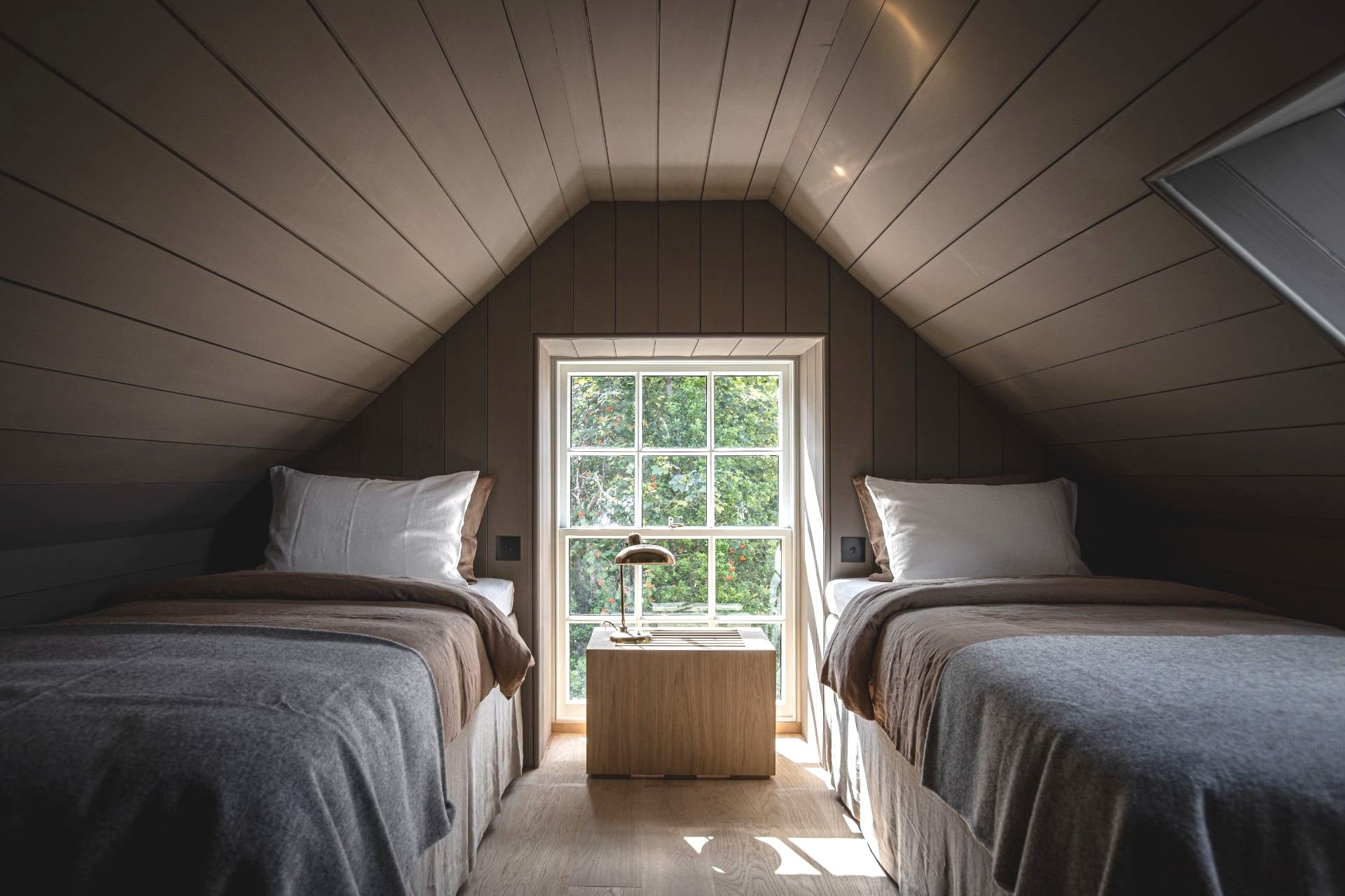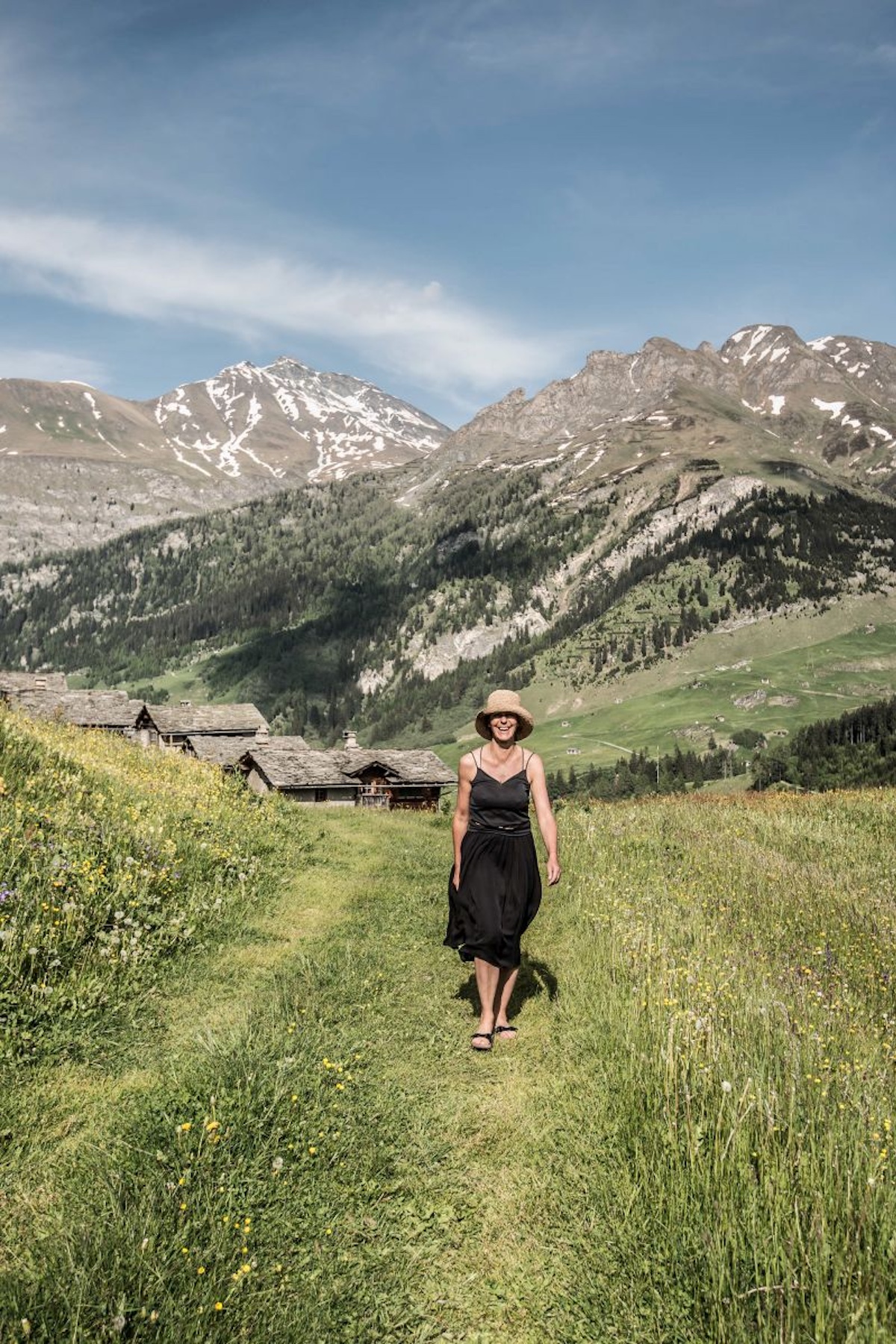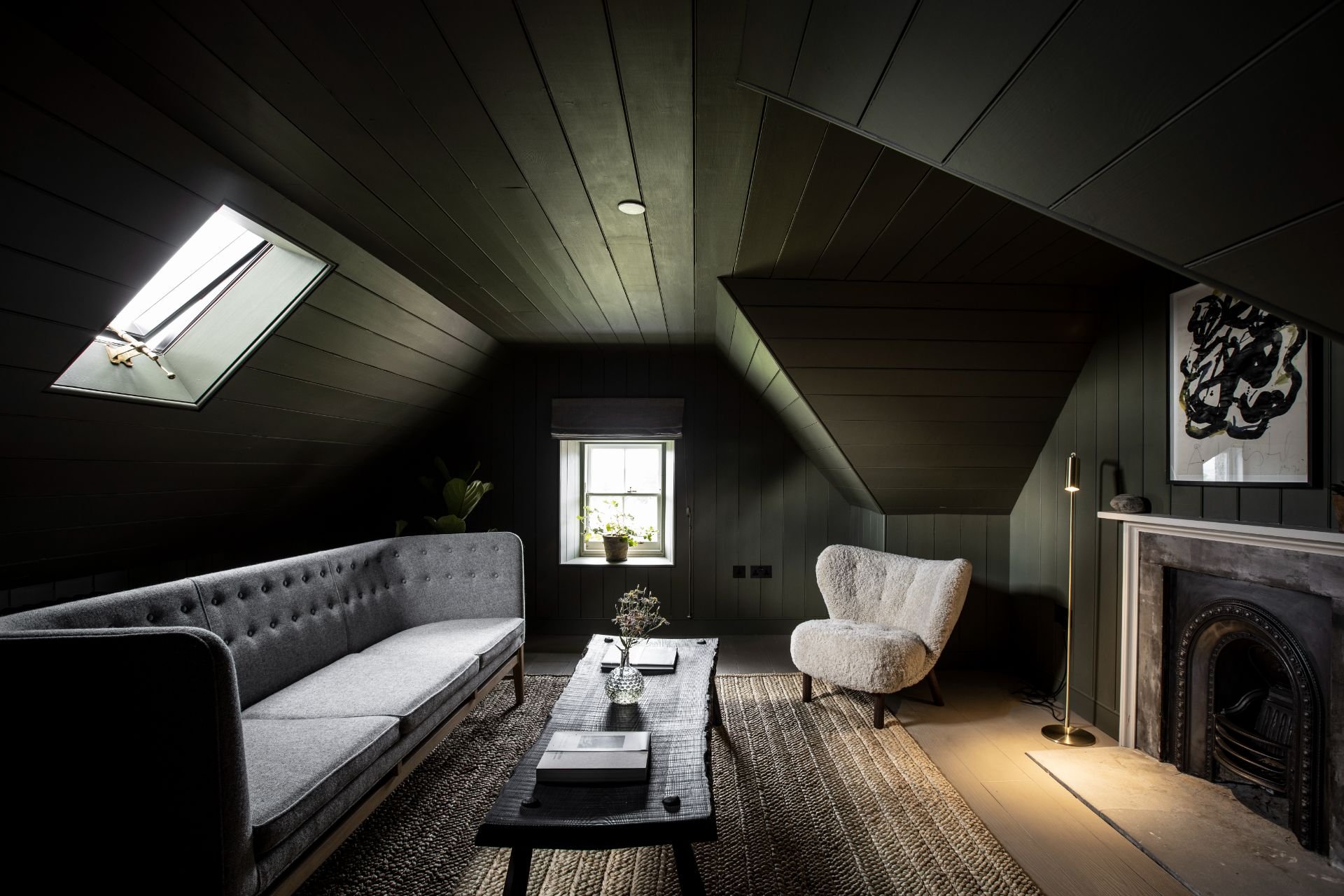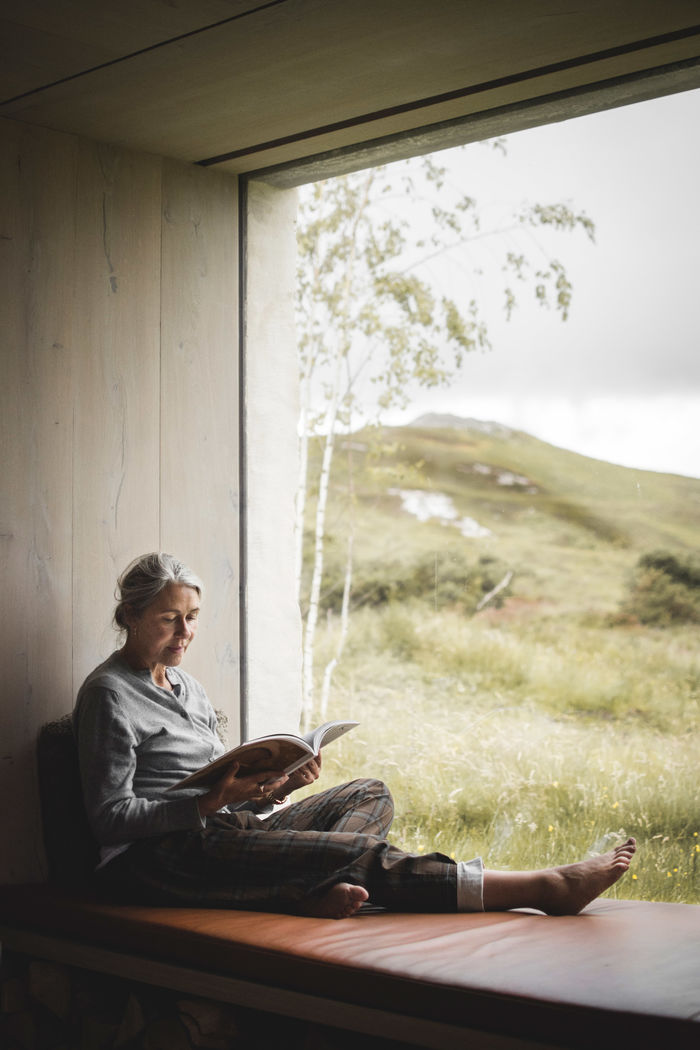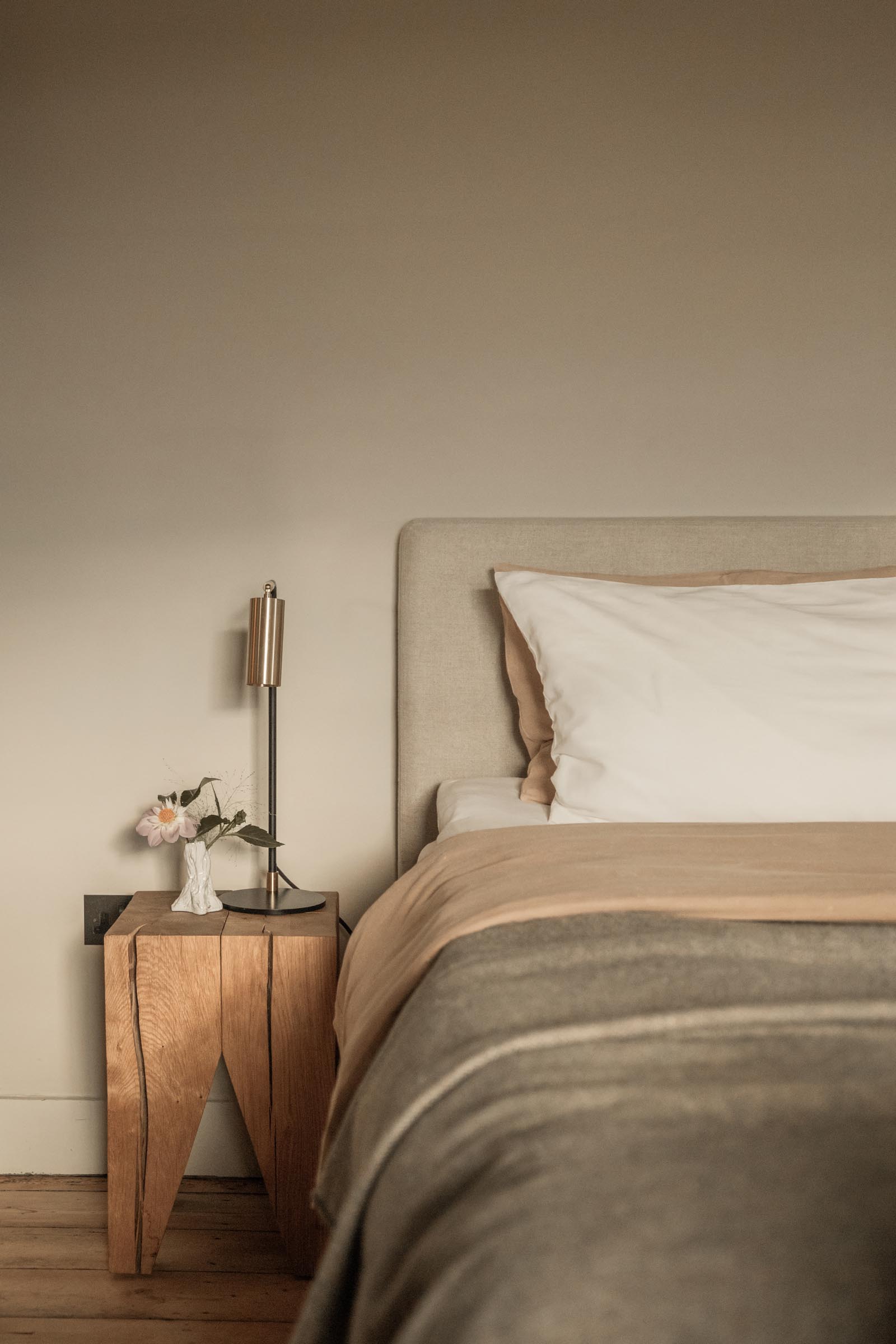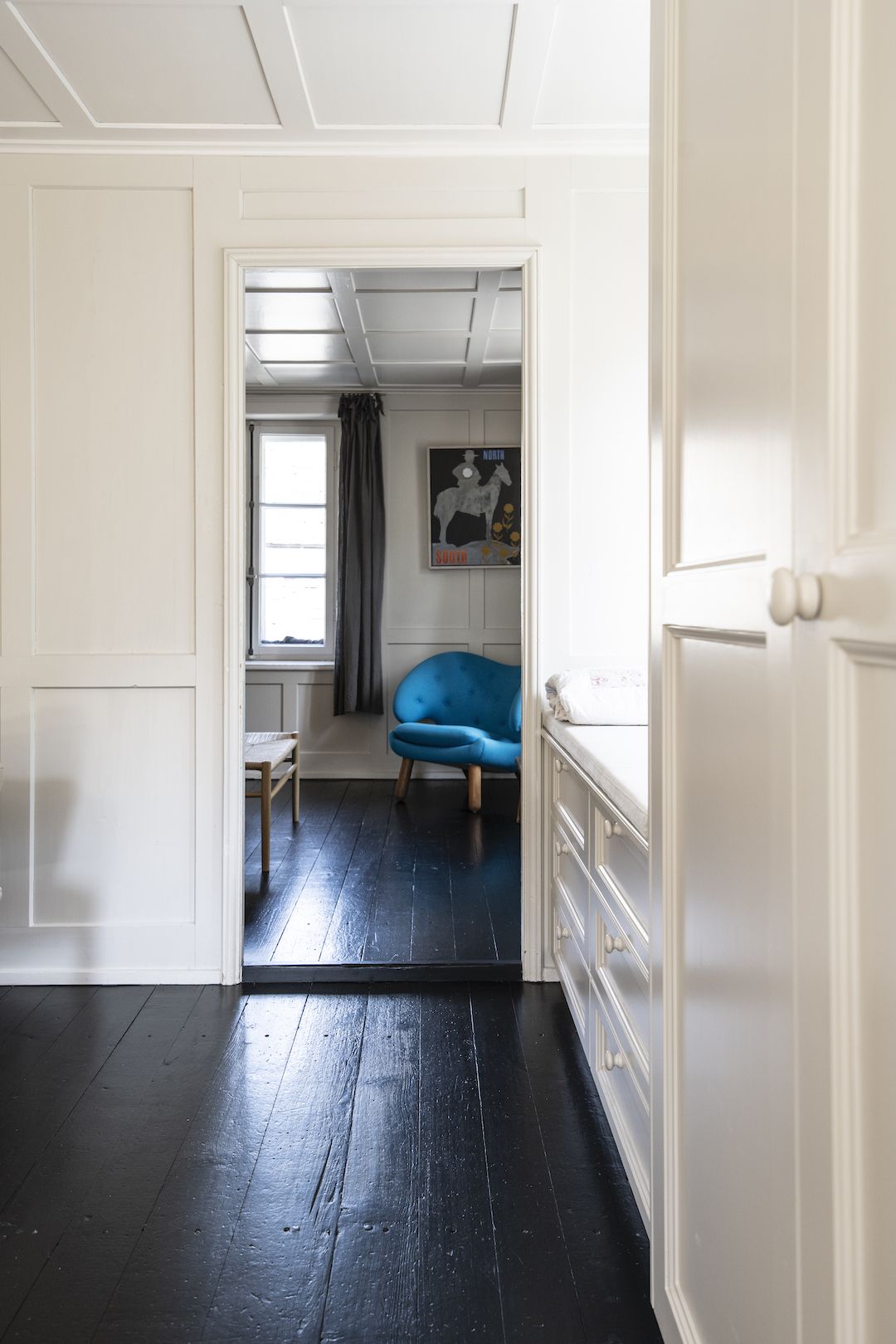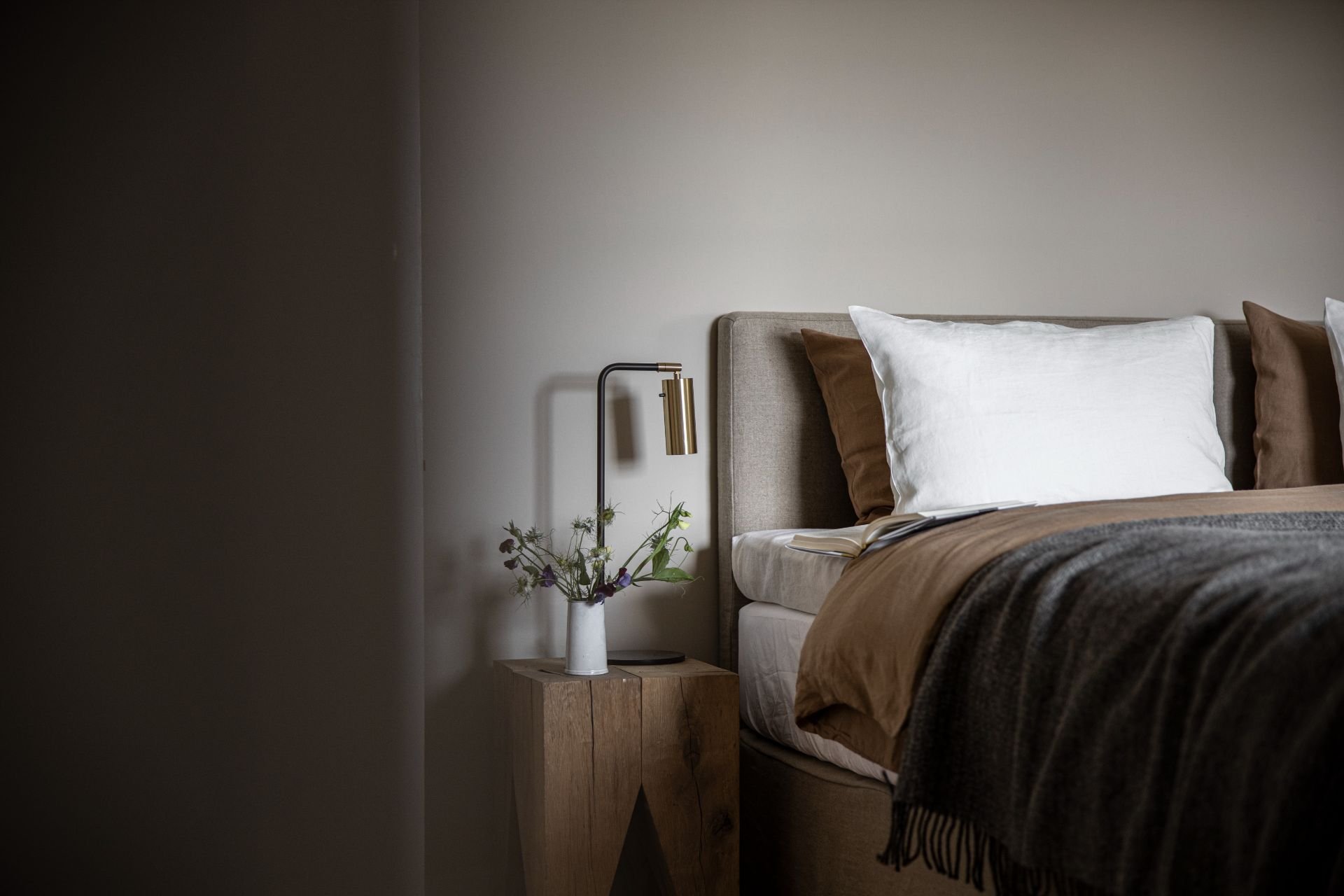JOIN the AFICIONADOS
Get the insider news and lowdown on what we've been up to, where we've been, and who we've met along the way. Be the first to discover new places and get the scoop on our favourites.
Swiss-born Ruth Kramer has long embraced the poetic precision of understatement. With a design language shaped by Danish clarity and a tactile love of craftsmanship, her interiors exude a softness that whispers rather than shouts. From the alpine hush of Brücke 49 in Vals to the wind-swept majesty of the Scottish Highlands, her work holds a quietly composed magic, deeply attuned to landscape and legacy, form and feeling.
Educated at the Danish Academy of Design and originally trained in fashion, Ruth spent over two decades honing her eye for texture, silhouette and materiality with global houses such as H&M, Inditex and Bestseller. But it was in Switzerland, post-2009, that her lifelong fascination with interiors crystallised into a new chapter. Interiors became her atelier, spaces in which mood, material and meaning were rendered with a minimalist’s touch and a soulfully curated hand.
At Brücke 49, her signature palette of earth-drawn greys, dark greens and mellow taupe anchors the rooms in stillness and warmth. "I work with colour like one works with light – in layers, transitions and memories," she says. "A cool grey becomes warm when it meets rough wool or is touched by soft morning light. Colours, to me, carry not just atmosphere but origin. They are quiet, but they tell stories."
Texture plays a leading role. Linen, wool, clay, oak – all are chosen not for effect but for feeling. "From fashion, I’ve carried over a deep sensitivity to touch – how fabrics move, how they age, how they behave when you let them be." For Ruth, textiles are not decorative but structural. They achieve what architecture alone cannot: they touch us.
Her designs are celebrated for their effortless functionality and spatial clarity. "I think in movements, not in furniture. Rooms should be allowed to flow – not be perfect, but alive. Generosity comes from reduction, not size. Cosiness from material, from proximity, from truth."
This honesty flows through her work with heritage buildings. "I listen first. Old houses have voices, scents, scars. You cannot drown them out. Modern elements may join – not to shine, but to accompany. I’m not looking for contrast, but for resonance." This extends to her sense of what makes a space human. "I work with texture, light and silence. I allow irregularities. An old handle, a shadow, a trace of use – these make a room tangible. And perhaps, not explaining everything. Leaving something open."
While she often works with the patina of aged structures, Ruth is not wedded to the past. "I don’t need patina – but I love it. It carries time. It slows you down. But even new spaces can have depth if you don’t overload them. Rooms must be allowed to breathe."
Art too is integral, often entering the design process before the first object is placed. "Art is not an add-on – it’s a conversation. I love pieces that don’t give themselves away immediately. They keep something open. And rooms need that."
Sustainability, craft and heritage are not post-rationalised in Ruth’s work. They are givens. "These things are not an attitude – they are the prerequisite. I work with local craftspeople, local materials, and with pieces that are allowed to stay. Design is a responsibility – to place, to people, to the future."
Now living in her kindled retreat in Graubünden, Ruth continues to refine her vocabulary of soft strength and thoughtful restraint, creating havens that speak in hushed tones but leave lasting impressions. "It continues northward," she says, "with places that are found, not searched for. And with spaces that want to be homes, even if only for a while." At Brücke 49, new ideas are always percolating – smaller, quieter, more personal.
